Spotted beebalm (
Monarda punctata) is a magnet for pollinators, particularly bees and wasps, and can be an integral part of a native planting around a vegetable garden. This Eastern native requires little maintenance or watering and has a long and productive blooming period.
I like to use this as a filler in planting compositions; it also provides lots of nourishment for beneficial native insects. It is a relatively short-lived perennial — now is a good time to order some seed for fall sowing or to install some blooming plants to allow natural self-sowing.
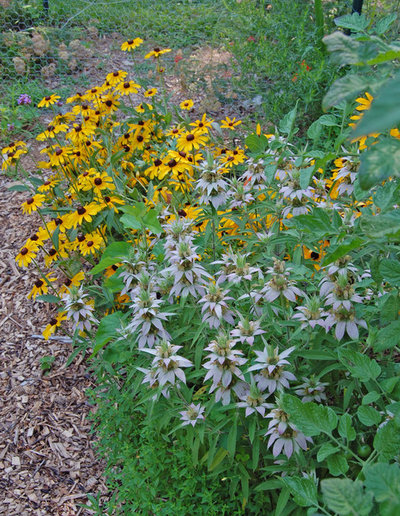 Botanical name: Monarda punctataCommon names:
Botanical name: Monarda punctataCommon names: Spotted beebalm, horsemint, dotted mint
Origin: Eastern North America from Vermont to Florida and west to Minnesota and New Mexico
Where it will grow: Hardy to -35 degrees Fahrenheit (USDA zones 3 to 8; find your zone)
Water requirement: Medium to dry soil
Light requirement: Partial to full sun
Mature size: 1 foot to 3 feet tall and wide
Benefits and tolerances: Naturally grows in dry, sandy soils but can handle normal garden conditions; its flowers are very attractive to pollinators and many beneficial insects; relatively mildew resistant compared to other beebalms; resistant to deer browsing
Seasonal interest: Late June through September
When to plant: This plant is easy to grow from seed and will bloom in the first year; seeds are sown outdoors on the soil surface in fall or early spring, but they may also be started indoors under lights; while no pretreatment is required, I have gotten excellent germination with moist stratification of seeds for two months in the refrigerator. Bare-root plants are available from online nurseries for spring planting. Some nurseries may have plants available in pots as well.
Shown: Spotted beebalm backed by a clump of black-eyed Susans (
Rudbeckia hirta)
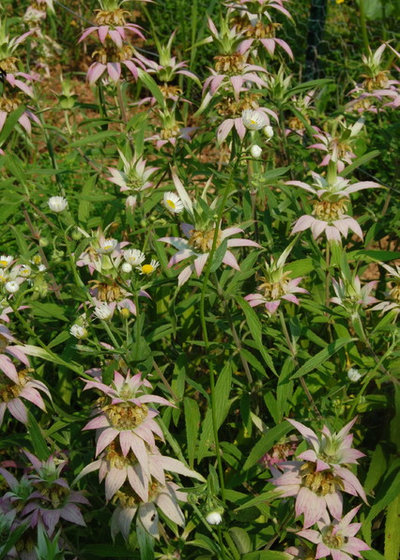 Distinguishing traits.
Distinguishing traits. The flowers and colorful bracts occur in two or more tiers around the upper stems. The bracts of spotted beebalm persist longer than the actual flowers, thus extending the time that they are in “bloom.” Typical of other members of the mint family, the plant has square stems and opposite leaves. The leaves have an oregano-like odor when disturbed.
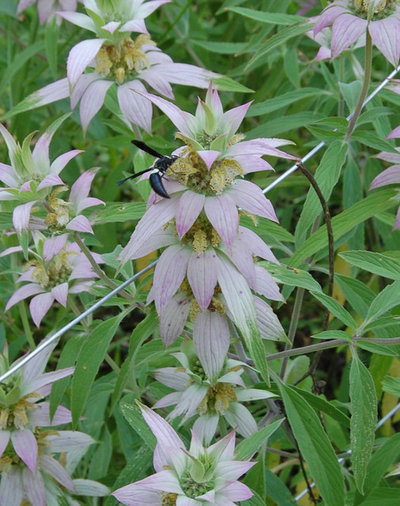 Flower structure.
Flower structure. The actual flowers are small yellow tubes with purple spots arranged in a ring around the stem. Rings of flowers are separated by large pinkish to whitish bracts. These bracts are what is most noticeable from a distance. A mason wasp, which feeds on pollen and caterpillars, is one of the common visitors.
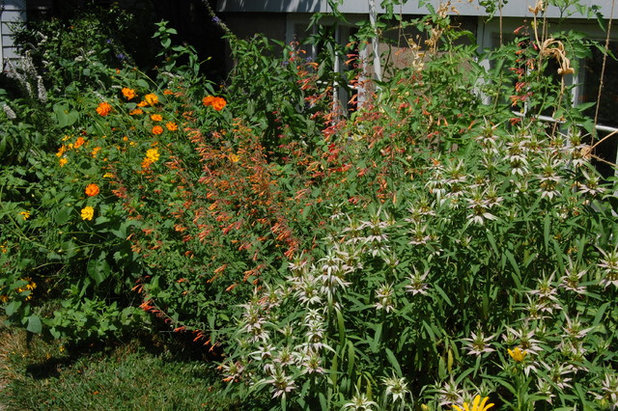
The color and structure of spotted beebalm make it easily distinguished in this mixed-bed planting that includes orange hummingbird mint (
Agastache) and sulphur cosmos (
Cosmos sulphureus).
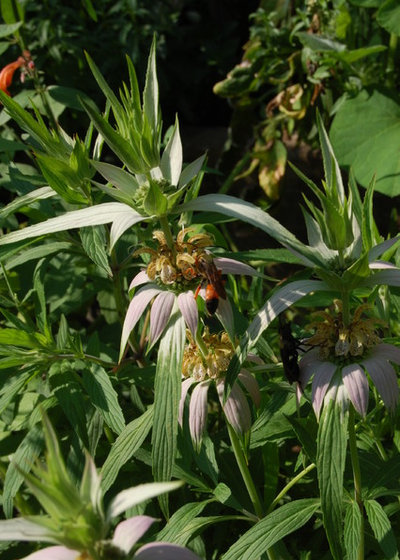
This golden digger wasp is one of the common beneficial visitors to spotted beebalm. It feeds on grasshoppers and crickets and is not aggressive. In fact, I have had no problems with behavior by any insects visiting this plant. Of course, I don’t try to provoke them either.
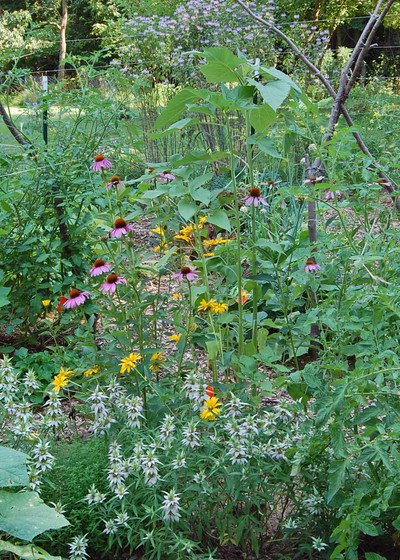 How to use it.
How to use it. Use spotted beebalm in a native-plant garden, a pollinator garden, a cutting garden or a cottage garden. It is a good size for the front or middle of a planting bed. The unique shape of spotted beebalm makes it stand out in this composition. Its drought tolerance also makes it a good choice for use in pots.
Shown: Spotted beebalm combined with purple coneflower (
Echinacea sp), ox eye (
Heliopsis ‘Summer Sun’) and an annual sunflower in the center
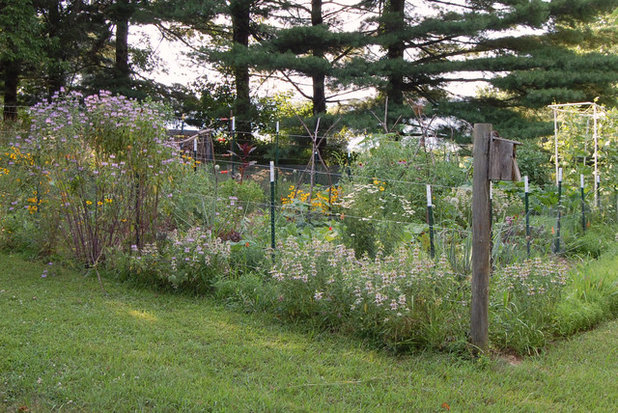
Here is spotted beebalm in a native plant border. A native border like this around a vegetable garden attracts many pollinators and beneficial insects. The dense growth also provides a physical barrier around the garden.
Planting notes. This is a short-lived perennial; it declines after about three years. However, it is a vigorous reseeder, and some seed should be allowed to mature and self-sow to regenerate the plant.
More:The Simple Secret to Gardening Success
Houzz guides to gardening with native plants





